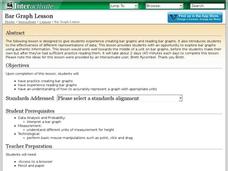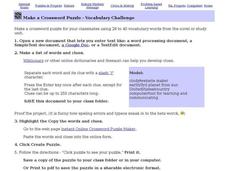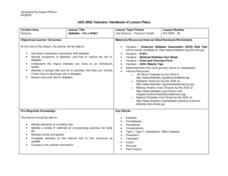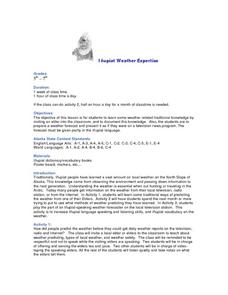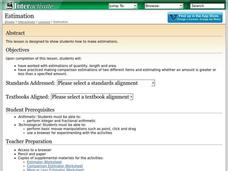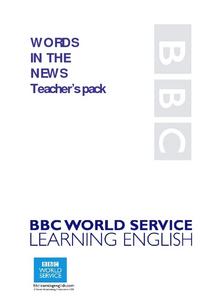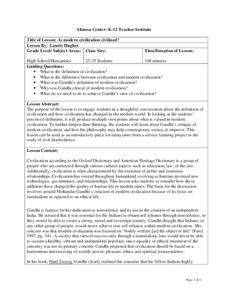Curated OER
Mars Curriculum
Pupils study Mars and other plants in the night sky. In a planetarium setting using Digitarium planetarium system, students identify the Big Dipper and Polaris. They explore the major differences between the planets and the stars. ...
Curated OER
Bar Graph Lesson
Students make a bar graph. In this graphing lesson, students discuss why bar graphs are used and are shown bar graph examples. Students create their own bar graph to compare the heights of different things around the world. Students...
Curated OER
Make A Crossword Puzzle - Vocabulary Challenge
In this crossword puzzle worksheet, students make a crossword puzzle from their vocabulary words. Students follow 6 sets of directions to make the online puzzle.
Curated OER
Kin Bee
In this possessive nouns learning exercise, students pick cards with possessive nouns on them and come up with complete sentences to show family relationships. Players get points for each correct sentence.
Curated OER
JUDY DREWDY DETECTIVE KIT CHECKLIST
In this literature worksheet, 3rd graders work with the character Judy Drewdy. Students use the given worksheet to create their own detective kits and respond to 7 short answer questions including a puzzle with given clues.
Curated OER
Diabetes - It's a Killer!
Students survey, graph and chart their prior knowledge about diabetes. They read a handout and complete a K-W-L chart. They develop a rubric to assess their diet and exercise and develop a shopping list, menu and exercise plan to share.
Curated OER
Environment: Inupiat Weather Expertise
Students investigate methods of weather prediction prior to modern communication sources. A local elder lectures the class on weather prediction and safety. They document the experience by creating posters. Applying methods given by the...
Curated OER
Estimation
Young scholars explore the concept of estimation. In this estimation instructional activity, students discuss making estimates through teacher led discussion. Young scholars use the Internet to complete an activity where they must...
Curated OER
Anatomy of a Book
Students reference books to become familiar with locating information necessary for citing resources in a research paper. In this technical writing lesson students work in groups to find the answers to prepared questions.
Curated OER
Words in the News Internet Companies Try To Stop Spam - 8 February 2006
Students complete vocabulary and word work before reading an online article. They complete worksheets and an online quiz before they participate in an activity in which they invent a simple product or service.
Curated OER
DNA
For this DNA worksheet, 9th graders read a brief excerpt pertaining to the genetic code and identify how proteins know which cell to create. Then they use the genetic code dictionary to draw a diagram showing the codons for an imaginary...
Curated OER
Prime Numbers and Factors
Students determine factors of numbers to 100 and identify prime factors; students differentiate prime and composite numbers by the factors of the numbers.
Curated OER
Idioms...not the be taken literally!
Students define common English idioms which they find in books and book excerpts. They use an idiom dictionary and constuct a database of five idioms along with meanings and sentences. They beam this information to classmates.
Curated OER
Create Your Own Coded Language
Students discover and identify cryptology used in everyday life. They decipher or crack codes. Students create their own secret writing or coded messages, and develop a dictionary of eponyms. They discuss how they have already...
Curated OER
2nd Grade Language Practice
In this language practice worksheet, students complete a total of 25 multiple choice questions related to a variety of 2nd grade language concepts. An answer key is included.
Curated OER
What's for Dinner? (Using Adjectives)
Sixth graders use adjectives to describe foods listed in restaurant menus. In cooperative groups, 6th graders create menus and identify the adjectives used in the menu created by their group.
Curated OER
The Adventures of Tom Sawyer
Students identify lightning words from The Adventures of Tom Sawyer to complete definition and synonym activities. In this word study lesson, students discuss lighting words and read a Mark Twain quote. Students then read specific...
Curated OER
Is Modern Civilization Civilized?
Students examine the concept of civility. For this modern civilization lesson, students study Gandhi's teaching about the attributes of civilized societies and discuss how they can contribute to fostering civilization in their own...
Curated OER
It's a Ball, It's a Sphere ... No, It's a Dodecahedron
Third graders construct a dodecahedron that displays facts about two and three-dimensional figures. They use a pattern to construct a dodecahedron after writing facts about geometry onto each of the figure's twelve faces.
Curated OER
Genetically Inherited Traits
Students explore heredity by examining how traits are passed from parent to offspring. Genetic terminology is examined and examples of inherited traits discussed. calculating genetic probability is also investigated in this lesson.
Curated OER
Centipede or Millipede?
Students discuss millipedes and centipedes in terms of their classification as arthropod. Using a diagram, students categorize and compare and contrast the characteristics of millipedes and centipedes based on their discussion of...
Alabama Learning Exchange
Honeybees
Pupils explore the various functions of bees within the hive and explain the process of making honey. They use numerous resources to find their information including the internet, library books and their science texts.
Curated OER
Measurement Mania
First graders measure 10 different objects found in the classroom, including their own hands and feet, then record their findings. This is a fun instructional activity for students to experience measurement using a ruler and unifix cubes.
Curated OER
Now I See You... The Changing Perception of Women
Students examine the changing view of women during the 20th century. Using art, literature and music, they identify the various perceptions used throughout history. They also predict what women's' perceptions are going to be in the next...



